Is sulindac a narcotic. Sulindac: Uses, Side Effects, and Important Safety Information
What is sulindac used for. How does sulindac work. What are the common side effects of sulindac. Is sulindac a narcotic drug. What are the FDA warnings for sulindac. How does sulindac interact with other medications.
What Is Sulindac and How Does It Work?
Sulindac is a nonsteroidal anti-inflammatory drug (NSAID) used to treat various types of arthritis, ankylosing spondylitis, and acute shoulder pain. It’s available as a generic oral tablet and works by reducing levels of prostaglandin, a hormone-like substance that causes inflammation. This mechanism helps decrease pain, swelling, and fever.
Sulindac is primarily prescribed for:
- Osteoarthritis
- Rheumatoid arthritis
- Ankylosing spondylitis
- Acute gout symptoms
- Acute shoulder pain
Is sulindac a narcotic?
No, sulindac is not a narcotic. It belongs to the NSAID class of medications, which are non-addictive and do not produce the euphoric effects associated with narcotics. Sulindac works differently from narcotic pain relievers and is primarily used for its anti-inflammatory properties.

Important FDA Warnings for Sulindac
The Food and Drug Administration (FDA) has issued black box warnings for sulindac, which are the most serious type of warning. These alerts inform healthcare providers and patients about potentially dangerous drug effects.
Cardiovascular Risk Warning
Sulindac may increase the risk of serious cardiovascular events, including:
- Blood clots
- Heart attack
- Stroke
These risks are higher for individuals with existing heart disease or risk factors such as high blood pressure. The danger may also increase with higher doses or prolonged use of sulindac.
Gastrointestinal Risk Warning
Taking sulindac can increase the risk of severe gastrointestinal problems, including:
- Stomach bleeding
- Ulcers
- Perforations in the lining of the digestive system
These complications can occur at any time during treatment and may be fatal. Patients over 65 years of age are at higher risk for these adverse effects.
Common Side Effects of Sulindac
While sulindac can be effective in treating various inflammatory conditions, it may cause several side effects. The most common side effects include:
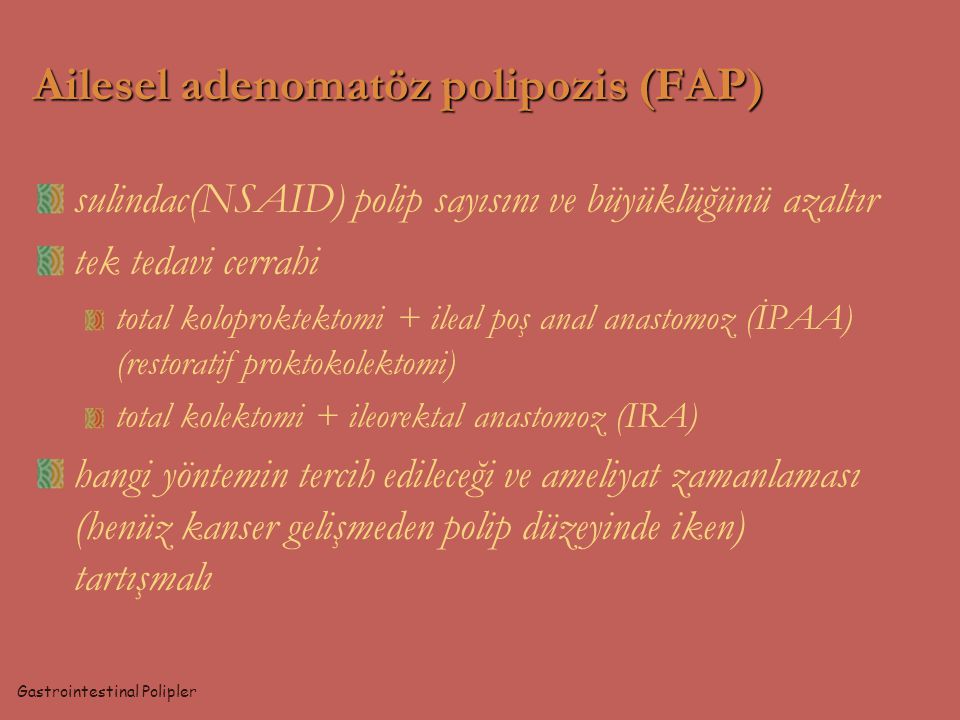
- Stomach pain
- Heartburn
- Nausea
- Diarrhea
- Constipation
- Rash
- Dizziness
- Headache
These side effects are often mild and may resolve on their own within a few days or weeks. However, if they persist or worsen, it’s important to consult with a healthcare provider.
Serious Side Effects and When to Seek Medical Attention
While less common, sulindac can cause serious side effects that require immediate medical attention. These include:
Symptoms of Heart Attack or Stroke
- Chest pain or tightness
- Shortness of breath
- Arm pain
- Weakness on one side of the body
- Slurred speech
Signs of Gastrointestinal Bleeding
- Vomiting blood
- Bloody stools
- Black, tarry stools
Other Serious Side Effects
- Severe skin reactions (rash, blistering)
- Signs of liver problems (yellowing of skin or eyes)
- Asthma attacks
- Allergic reactions
If you experience any of these symptoms, seek medical help immediately or call emergency services.
Drug Interactions with Sulindac
Sulindac can interact with various medications, potentially altering their effectiveness or increasing the risk of side effects. It’s crucial to inform your healthcare provider about all medications, vitamins, and herbal supplements you’re taking.

Interactions with Other NSAIDs
Combining sulindac with other NSAIDs can significantly increase the risk of gastrointestinal bleeding and ulcers. Examples of other NSAIDs include:
- Ibuprofen
- Naproxen
- Aspirin
- Celecoxib
Other Potential Drug Interactions
Sulindac may also interact with:
- Blood thinners (e.g., warfarin)
- Certain antidepressants (e.g., SSRIs)
- Diuretics
- ACE inhibitors
- Beta-blockers
Always consult with your healthcare provider or pharmacist about potential drug interactions before starting sulindac or any new medication.
Proper Usage and Dosage Guidelines for Sulindac
Sulindac is available as an oral tablet and should be taken exactly as prescribed by your healthcare provider. The dosage and duration of treatment will vary depending on the condition being treated and individual factors.
General Dosage Information
- Typical starting dose: 150 mg twice daily
- Maximum daily dose: 400 mg
- Take with food or milk to reduce stomach upset
- Swallow tablets whole; do not crush, chew, or break them
It’s important to use the lowest effective dose for the shortest duration possible to minimize the risk of side effects. Your healthcare provider may adjust your dosage based on your response to treatment and any side effects you experience.

Special Dosage Considerations
Certain groups may require dosage adjustments:
- Elderly patients: May need lower doses due to increased risk of side effects
- Patients with kidney or liver problems: May require dose reduction
- Individuals with a history of stomach ulcers: May need additional medications to protect the stomach
Always follow your healthcare provider’s instructions and never adjust your dosage without consulting them first.
Precautions and Contraindications for Sulindac Use
While sulindac can be an effective treatment for various inflammatory conditions, it’s not suitable for everyone. Certain precautions and contraindications should be considered before starting treatment.
Who should not take sulindac?
Sulindac is contraindicated in the following situations:
- Individuals with a known allergy to sulindac or other NSAIDs
- Patients who have experienced asthma, urticaria, or allergic reactions after taking aspirin or other NSAIDs
- People scheduled for coronary artery bypass graft (CABG) surgery
- Individuals with active gastrointestinal bleeding
Precautions for specific groups
Certain groups should use sulindac with caution and under close medical supervision:

- Elderly patients: Higher risk of adverse effects
- Individuals with a history of gastrointestinal problems
- Patients with cardiovascular disease or risk factors
- People with kidney or liver disease
- Individuals with asthma
- Pregnant women, especially in the third trimester
- Breastfeeding mothers
Always inform your healthcare provider about your complete medical history and any medications you’re taking before starting sulindac treatment.
Alternatives to Sulindac for Pain and Inflammation Management
While sulindac can be effective for many patients, some individuals may need to consider alternatives due to side effects, contraindications, or personal preferences. There are several other options available for managing pain and inflammation.
Other NSAIDs
Different NSAIDs may have varying levels of effectiveness and side effects for different individuals:
- Ibuprofen
- Naproxen
- Celecoxib
- Meloxicam
Non-NSAID Pain Relievers
For those who cannot take NSAIDs, other pain relief options include:
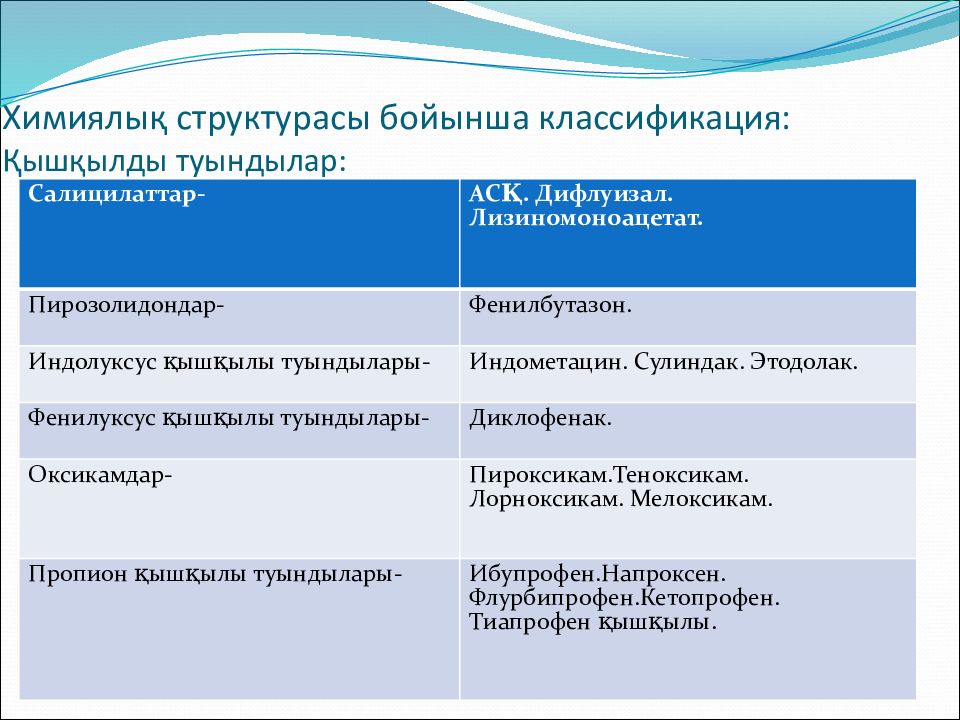
- Acetaminophen (Tylenol)
- Topical pain relievers (e.g., capsaicin, lidocaine)
- Certain antidepressants (for chronic pain)
- Gabapentin or pregabalin (for neuropathic pain)
Disease-Modifying Antirheumatic Drugs (DMARDs)
For conditions like rheumatoid arthritis, DMARDs may be prescribed:
- Methotrexate
- Hydroxychloroquine
- Sulfasalazine
- Biologic agents (e.g., TNF inhibitors)
Non-Pharmacological Approaches
Complementary therapies can be used alongside or instead of medication:
- Physical therapy
- Exercise and weight management
- Hot and cold therapy
- Acupuncture
- Massage
- Cognitive behavioral therapy for pain management
The choice of alternative treatment should be made in consultation with a healthcare provider, taking into account the specific condition, individual health status, and potential risks and benefits of each option.
Monitoring and Follow-Up Care While Taking Sulindac
Regular monitoring and follow-up care are essential when taking sulindac to ensure its effectiveness and minimize the risk of complications. Your healthcare provider will likely establish a monitoring plan tailored to your individual needs and risk factors.

Regular Check-ups
Periodic appointments with your healthcare provider may include:
- Assessment of pain relief and overall symptom management
- Evaluation of any side effects
- Blood pressure checks
- Cardiovascular risk assessment
Laboratory Tests
Your doctor may order certain tests to monitor your health while on sulindac:
- Complete blood count (CBC) to check for anemia or bleeding problems
- Liver function tests
- Kidney function tests
- Stool tests if gastrointestinal bleeding is suspected
Self-Monitoring
Patients should be aware of and report any of the following to their healthcare provider:
- Unexplained weight gain or swelling
- Changes in urine output
- Signs of gastrointestinal bleeding
- New or worsening cardiovascular symptoms
- Skin reactions or rashes
Maintaining open communication with your healthcare provider and adhering to the recommended monitoring schedule is crucial for safe and effective use of sulindac.
Side Effects, Dosage, Uses, and More
Highlights for sulindac
- Sulindac oral tablet is available as a generic drug. It doesn’t have a brand-name version.
- Sulindac only comes as a tablet you take by mouth.
- Sulindac is used to treat different types of arthritis, shoulder pain, and ankylosing spondylitis.
FDA warnings
- This drug has black box warnings. These are the most serious warnings from the Food and Drug Administration (FDA). Black box warnings alert doctors and patients about drug effects that may be dangerous.
- Dangerous heart events warning: Sulindac isn’t recommended if you have heart disease or risks for heart disease, such as high blood pressure. It may increase your risk of blood clots, heart attack, and stroke, which may be fatal (cause death). Your risk may be higher if you take sulindac at high doses or for a long time. This drug can cause heart problems even if you don’t have risks factors for heart disease.
 You shouldn’t take sulindac if you’ll be having coronary artery bypass graft surgery. Your risk of heart attack or stroke may increase if you take sulindac to treat pain before or after your surgery. Also, avoid taking sulindac after a recent heart attack unless your healthcare provider tells you to.
You shouldn’t take sulindac if you’ll be having coronary artery bypass graft surgery. Your risk of heart attack or stroke may increase if you take sulindac to treat pain before or after your surgery. Also, avoid taking sulindac after a recent heart attack unless your healthcare provider tells you to. - Dangerous stomach problems warning: Taking sulindac increases your risk of stomach bleeding, ulcers, or small holes in the lining of your digestive system, which can be fatal. These events may occur at any time and without any symptoms. You’re at a higher risk if you’re over the age of 65 years.
Was this helpful?
Other warnings
Sulindac is a prescription drug. It comes as an oral tablet.
Sulindac is only available as a generic drug. Generic drugs usually cost less than brand-name versions.
Why it’s used
Sulindac is used to treat pain and redness, swelling, and inflammation from different types of arthritis, ankylosing spondylitis, and short-term shoulder pain. Sulindac is used to treat:
Sulindac is used to treat:
- osteoarthritis
- rheumatoid arthritis
- ankylosing spondylitis
- acute gout symptoms
- acute shoulder pain
How it works
Sulindac belongs to a class of drugs called nonsteroidal anti-inflammatory drugs (NSAIDs). NSAIDs help reduce pain, inflammation, and fever.
It isn’t known how sulindac works to decrease pain. It may help reduce swelling by lowering levels of prostaglandin, a hormone-like substance that usually causes inflammation.
Sulindac oral tablet doesn’t cause drowsiness, but it can cause other side effects.
More common side effects
The more common side effects that can occur with sulindac include:
- stomach pain
- heartburn
- nausea
- diarrhea
- constipation
- rash
- dizziness
- headache
If these effects are mild, they may go away within a few days or a couple of weeks. If they’re more severe or don’t go away, talk to your doctor or pharmacist.
Serious side effects
Call your doctor right away if you have serious side effects. Call 911 if your symptoms feel life-threatening or if you think you’re having a medical emergency. Serious side effects and their symptoms can include the following:
- Chest pain or heart attack. Symptoms of heart attack can include:
- chest pain
- chest tightness
- sweating
- shortness of breath
- heartburn/indigestion
- arm pain
- fatigue
- Stroke. Symptoms can include:
- weakness in one part or side of your body
- slurred speech
- High blood pressure
- Swelling in your arms and legs, hands and feet, face, or throat
- Stomach bleeding and ulcers. Symptoms can include:
- vomiting blood
- bloody stools
- black and sticky stools
- Skin reactions. Symptoms can include:
- rash
- blisters
- Allergic reactions, such as itching
- Liver problems.
 Symptoms can include:
Symptoms can include:- yellowing of your skin or the whites of your eyes
- Asthma attacks. Symptoms can include:
- shortness of breath
- trouble breathing
Disclaimer: Our goal is to provide you with the most relevant and current information. However, because drugs affect each person differently, we cannot guarantee that this information includes all possible side effects. This information is not a substitute for medical advice. Always discuss possible side effects with a healthcare provider who knows your medical history.
Sulindac oral tablet can interact with other medications, vitamins, or herbs you may be taking. An interaction is when a substance changes the way a drug works. This can be harmful or prevent the drug from working well.
To help avoid interactions, your doctor should manage all of your medications carefully. Be sure to tell your doctor about all medications, vitamins, or herbs you’re taking. To find out how this drug might interact with something else you’re taking, talk to your doctor or pharmacist.
To find out how this drug might interact with something else you’re taking, talk to your doctor or pharmacist.
Examples of drugs that can cause interactions with sulindac are listed below.
Nonsteroidal anti-inflammatory drugs (NSAIDs)
Sulindac is an NSAID. Combining it with other NSAIDs increases your risk of stomach bleeding and ulcers. Examples of other NSAIDs include:
- aspirin
- ibuprofen
- naproxen
- diclofenac
- indomethacin
- meloxicam
- ketorolac
- ketoprofen
Blood pressure drugs
Taking sulindac with these drugs may reduce their blood pressure-lowering effects. Examples of these drugs include:
- angiotensin-converting enzyme (ACE) inhibitors such as:
- enalapril
- captopril
- lisinopril
- angiotensin receptor blockers such as:
- valsartan
- losartan
- candesartan
- diuretics such as:
- furosemide
- hydrochlorothiazide
Anticoagulants
Taking sulindac with anticoagulants increases your risk of bleeding. Examples of these drugs include:
Examples of these drugs include:
- warfarin
- dabigatran
- rivaroxaban
- edoxaban
Bipolar disorder drug
Taking lithium with sulindac may increase the levels of lithium in your body. This can cause dangerous effects. Your doctor may monitor your lithium levels if you take these medications together.
Transplant drug
Taking cyclosporine with sulindac may increase the levels of cyclosporine in your body. This can cause dangerous effects. Your doctor may monitor your cyclosporine levels if you take these medications together.
Disclaimer: Our goal is to provide you with the most relevant and current information. However, because drugs interact differently in each person, we cannot guarantee that this information includes all possible interactions. This information is not a substitute for medical advice. Always speak with your healthcare provider about possible interactions with all prescription drugs, vitamins, herbs and supplements, and over-the-counter drugs that you are taking.
This drug comes with several warnings.
Allergy warning
Sulindac can cause a severe allergic reaction. Symptoms may include:
- trouble breathing
- swelling of your face or throat
If you develop these symptoms, call 911 or go to the nearest emergency room.
Don’t take this drug again if you’ve ever had an allergic reaction to it. Taking it again could be fatal (cause death).
Alcohol interaction warning
Drinking alcohol while taking sulindac increases your risk of stomach bleeding or ulcer.
Warnings for people with certain health conditions
For people with high blood pressure: Sulindac may cause you to develop high blood pressure or make existing high blood pressure worse. Check your blood pressure before you start and while you take sulindac.
For people with ulcers or stomach bleeding: This medication increases your risk of stomach bleeding if you have a history of ulcers or stomach bleeding.
For people with heart disease: This medication may cause fluid retention, which is a problem with heart disease. Watch for symptoms of fluid retention while you take sulindac if you tend to retain water or you have heart failure.
For people with asthma: You shouldn’t take sulindac if you have a history of asthma, hives, or allergic reaction after taking aspirin or other nonsteroidal anti-inflammatory drugs (NSAIDs). You may experience a similar reaction to this drug, which may be deadly.
Warnings for other groups
For pregnant women: Sulindac is a category C pregnancy drug. That means two things:
- Research in animals has shown adverse effects to the fetus when the mother takes the drug.
- There haven’t been enough studies done in humans to be certain how the drug might affect the fetus.
Talk to your doctor if you’re pregnant or planning to become pregnant. Sulindac should be used during pregnancy only if the potential benefit justifies the potential risk.
If you become pregnant while taking this drug, call your doctor right away.
For women who are breastfeeding: It isn’t known if sulindac is passes through breast milk. If it does and you breastfeed, your child may be at risk of side effects from this drug. You and your doctor may decide whether you’ll take sulindac or breastfeed.
For seniors: If you’re older than 65 years, your body may process this drug more slowly. Your doctor may start you on a lowered dosage so that too much of this drug doesn’t build up in your body. Too much of the drug in your body can be dangerous.
For children: It hasn’t been established that sulindac is safe and effective for use in children younger than 18 years.
This dosage information is for sulindac oral tablet. All possible dosages and forms may not be included here. Your dose, form, and how often you take it will depend on:
- your age
- the condition being treated
- how severe your condition is
- other medical conditions you have
- how you react to the first dose
Drug form and strengths
Generic: Sulindac
- Form: oral tablet
- Strengths: 150 mg, 200 mg
Dosage for osteoarthritis
Adult dosage (ages 18–64 years)
Typical dosage: 150 mg taken twice per day in evenly spaced doses (for a total of 300 mg per day).
Child dosage (ages 0–17 years)
A dosage for children younger than 18 years hasn’t been established.
Senior dosage (ages 65 years and older)
Older adults may process drugs more slowly. A normal adult dose may cause levels of the drug to be higher than normal. If you’re a senior, you may need a lower dosage or you may need a different treatment schedule.
Dosage for rheumatoid arthritis
Adult dosage (ages 18–64 years)
Typical dosage: 150 mg taken twice per day in evenly spaced doses (for a total of 300 mg per day).
Child dosage (ages 0–17 years)
Dosage for children younger than 18 years hasn’t been established.
Senior dosage (ages 65 years and older)
Older adults may process drugs more slowly. A normal adult dose may cause levels of the drug to be higher than normal. If you’re a senior, you may need a lower dosage or you may need a different treatment schedule.
Dosage for ankylosing spondylitis
Adult dosage (ages 18–64 years)
Typical dosage: 150 mg taken twice per day in evenly spaced doses (for a total of 300 mg per day).
Child dosage (ages 0–17 years)
Dosage for children younger than 18 years hasn’t been established.
Senior dosage (ages 65 years and older)
Older adults may process drugs more slowly. A normal adult dose may cause levels of the drug to be higher than normal. If you’re a senior, you may need a lower dosage or you may need a different treatment schedule.
Dosage for acute shoulder pain
Adult dosage (ages 18–64 years)
Typical dosage: 200 mg taken twice per day in evenly spaced doses (for a total of 400 mg per day). Therapy usually lasts 7 to14 days.
Child dosage (ages 0–17 years)
Dosage for children younger than 18 years hasn’t been established.
Senior dosage (ages 65 years and older)
Older adults may process drugs more slowly. A normal adult dose may cause levels of the drug to be higher than normal. If you’re a senior, you may need a lower dosage or you may need a different treatment schedule.
Dosage for acute gouty arthritis
Adult dosage (ages 18–64 years)
Typical dosage: 200 mg taken twice per day in evenly spaced doses (for a total of 400 mg per day). Therapy usually lasts seven days.
Child dosage (ages 0–17 years)
Dosage for children younger than 18 years hasn’t been established.
Senior dosage (ages 65 years and older)
Older adults may process drugs more slowly. A normal adult dosage may cause levels of the drug to be higher than normal. If you’re a senior, you may need a lower dosage or you may need a different treatment schedule.
Special dosage considerations
For people with liver disease: Liver disease may make it harder to clear this drug from your body. This could cause drug levels to get too high. If you have liver disease, your daily dosage may be lowered.
This could cause drug levels to get too high. If you have liver disease, your daily dosage may be lowered.
For people with kidney disease: Kidney disease may make it harder to clear this drug from your body. If you have kidney disease, your daily dosage may be lowered.
Disclaimer: Our goal is to provide you with the most relevant and current information. However, because drugs affect each person differently, we cannot guarantee that this list includes all possible dosages. This information is not a substitute for medical advice. Always speak with your doctor or pharmacist about dosages that are right for you.
Sulindac oral tablet is used for short-term treatment when used for shoulder pain or gouty arthritis. It may be a long-term treatment when used for osteoarthritis, rheumatoid arthritis, or ankylosing spondylitis.
This drug comes with risks if you don’t take it as prescribed by your doctor.
If you stop taking the drug or don’t take it at all: You may experience more pain caused by your condition.
If you miss doses or don’t take the drug on schedule: Your medication may not work as well or may stop working completely. For this drug to work well, a certain amount needs to be in your body at all times.
If you take too much: You could have dangerous levels of the drug in your body. Symptoms of an overdose of this drug can include:
- nausea
- vomiting
- dizziness
- black or bloody stools
- coughing up blood
In rare cases, taking too much of this drug can result in death. If you think you’ve taken too much of this drug, call your doctor or seek guidance from the American Association of Poison Control Centers at 1-800-222-1222 or through their online tool. But if your symptoms are severe, call 911 or go to the nearest emergency room right away.
What to do if you miss a dose: If you miss a dose and it’s more than a few hours until your next dose, take it as soon as you can. If it’s just a few hours until your next dose, skip the dose and take the next one at the usual time.
If it’s just a few hours until your next dose, skip the dose and take the next one at the usual time.
Never try to catch up by taking two doses at once. This could result in dangerous side effects.
How to tell if the drug is working: You should have less pain from your condition.
Keep these considerations in mind if your doctor prescribes sulindac for you.
General
- Take this medication with food to reduce stomach irritation and damage.
- You can cut or crush the oral tablets.
Storage
- Store this medication at room temperature between 68°F and 77°F (20°C and 25°C).
- Don’t freeze this drug.
- Keep this drug away from light.
- Don’t store this medication in moist or damp areas, such as bathrooms.
Refills
A prescription for this medication is refillable. You should not need a new prescription for this medication to be refilled. Your doctor will write the number of refills authorized on your prescription.
Travel
When traveling with your medication:
- Always carry your medication with you. When flying, never put it into a checked bag. Keep it in your carry-on bag.
- Don’t worry about airport X-ray machines. They can’t harm your medication.
- You may need to show airport staff the pharmacy label for your medication. Always carry the original prescription-labeled container with you.
- Don’t put this medication in your car’s glove compartment or leave it in the car. Be sure to avoid doing this when the weather is very hot or very cold.
Clinical monitoring
If you take sulindac for a long period of time, your doctor may take blood tests periodically to monitor your kidneys and liver.
Your doctor may also monitor you for signs of stomach bleeding, such as:
- vomiting blood
- bloody stools
- black and sticky stools
Availability
Not every pharmacy stocks this drug. When filling your prescription, be sure to call ahead to make sure your pharmacy carries it.
There are other drugs available to treat your condition. Some may be better suited for you than others. Talk to your doctor about other drug options that may work for you.
Disclaimer: Healthline has made every effort to make certain that all information is factually correct, comprehensive, and up-to-date. However, this article should not be used as a substitute for the knowledge and expertise of a licensed healthcare professional. You should always consult your doctor or other healthcare professional before taking any medication. The drug information contained herein is subject to change and is not intended to cover all possible uses, directions, precautions, warnings, drug interactions, allergic reactions, or adverse effects. The absence of warnings or other information for a given drug does not indicate that the drug or drug combination is safe, effective, or appropriate for all patients or all specific uses.
Sulindac – StatPearls – NCBI Bookshelf
Continuing Education Activity
Sulindac is a medication used as an anti-inflammatory and analgesic agent. It is in the class of non-steroidal anti-inflammatory drugs (NSAIDs). It is administered for the acute treatment of musculoskeletal shoulder pain, acute gouty arthritis, wear and tear osteoarthritis, and inflammatory arthritic conditions, including both rheumatoid arthritis and ankylosing spondylarthritis. For the individual patient, the lowest effective dose and shortest duration are recommended for initial treatment. This activity reviews the indications, contraindications, mechanism of action, adverse events, and other key elements of sulindac therapy in the clinical setting, which is helpful for clinicians. It also highlights the role of the interprofessional team in managing diseases when using sulindac.
It is in the class of non-steroidal anti-inflammatory drugs (NSAIDs). It is administered for the acute treatment of musculoskeletal shoulder pain, acute gouty arthritis, wear and tear osteoarthritis, and inflammatory arthritic conditions, including both rheumatoid arthritis and ankylosing spondylarthritis. For the individual patient, the lowest effective dose and shortest duration are recommended for initial treatment. This activity reviews the indications, contraindications, mechanism of action, adverse events, and other key elements of sulindac therapy in the clinical setting, which is helpful for clinicians. It also highlights the role of the interprofessional team in managing diseases when using sulindac.
Objectives:
Identify the mechanism of action of sulindac.
Describe the adverse effects of sulindac.
Review the appropriate monitoring for sulindac.
Summarize interprofessional team strategies for improving care coordination and communication to advance sulindac and improve outcomes.

Access free multiple choice questions on this topic.
Indications
Sulindac is a non-steroidal anti-inflammatory drug (NSAID). Like other NSAIDs, sulindac is used primarily to treat conditions characterized by acute or chronic inflammation. However, as per the manufacturer, the indications are broad.
Sulindac is indicated for a short duration for acute treatment of musculoskeletal shoulder pain (acute subacromial bursitis/supraspinatus tendinitis).
Sulindac also has FDA approval for other forms of arthritis, including wear and tear osteoarthritis and inflammatory arthritic conditions, including rheumatoid arthritis and ankylosing spondylarthritis.[1]
Sulindac also has approval for use in the treatment of acute gouty arthritis.[1]
Familial adenomatous polyposis (FAP) is a condition characterized by pediatric adenomas in the lower gastrointestinal tract and frequently results in colonic adenocarcinomas. Several chemopreventive strategies have been the object of research in an attempt to delay the development of colonic adenomas and subsequent adenocarcinomas.
 Sulindac has been one of the most extensively studied drugs used in this chemopreventative strategy.[2]
Sulindac has been one of the most extensively studied drugs used in this chemopreventative strategy.[2]
Mechanism of Action
Sulindac is a non-selective COX (cyclooxygenase) inhibitor that reversibly inhibits both COX-1 and COX-2 enzymes. The COX pathways are one of the two main pathways involved in arachidonic acid metabolism (the other involves leukotriene synthesis). The COX pathway results in the synthesis of both prostaglandins and thromboxanes. These are both critical mediators of inflammation and platelet aggregation.[3]
Prostaglandin E2 (PGE2) is often a trigger of the cardinal signs of inflammation: rubor (erythema), calor (warmth), tumor (swelling), and dolor (pain)- this is accomplished through increased blood flow and vascular permeability. PGE2 also triggers systemic fever through a hypothalamic-mediated reaction. Sulindac and other NSAIDs are responsible for inhibiting the synthesis of this prostaglandin and others. Sulindac exists as a pro-drug that activates upon initial metabolism. Its metabolism forms both sulfide and sulfone derivatives; the sulfide derivative is the one that is responsible for inhibiting prostaglandin synthesis.[4][5]
Its metabolism forms both sulfide and sulfone derivatives; the sulfide derivative is the one that is responsible for inhibiting prostaglandin synthesis.[4][5]
Pharmacokinetics
Absorption: Sulindac tablets have a similar extent of absorption compared to sulindac solution. There is no information regarding food’s effect on sulindac absorption. Antacids containing aluminum hydroxide 225 mg and magnesium hydroxide 200 mg per 5 mL do not change absorption extent.
Distribution: Sulindac, sulfone, and sulfide metabolites are highly protein bound (more than 90%), mainly to albumin.
Metabolism: Sulindac goes through two major biotransformations of its sulfoxide moiety: reduction to the pharmacologically active sulfide metabolite and oxidation to the inactive sulfone metabolite.
Elimination: Approximately half of the administered dose of sulindac is eliminated through urine with the conjugated sulfone metabolite. Approximately 25% of the administered dose of sulindac is excreted in the feces, the majority as the sulfone or sulfide metabolites. The mean plasma effective half-life for sulindac and its active sulfide metabolite is 7.8 hours and 16.4 hours, respectively.
The mean plasma effective half-life for sulindac and its active sulfide metabolite is 7.8 hours and 16.4 hours, respectively.
Administration
For the individual patient, the lowest effective dose and shortest duration are recommended for initial treatment. Sulindac is available as 150 mg and 200 mg oral tablets. The maximum recommended daily dose is 400 mg. Sulindac is recommended to take with food or milk to decrease GI side effects in adults and pediatric patients. Healthcare providers should carefully consider the potential risk to the benefit of sulindac and other relevant treatment options before determining to use the sulindac therapy option.
Osteoarthritis, Rheumatoid Arthritis, and Ankylosing Spondylitis
The initial recommended dose of sulindac is 150 mg twice a day. This dose can be increased or decreased based on the individual patient’s response. The dose can be increased up to 400 mg daily. Half of the patient population may expect a prompt response within one week of treatment; other patients may require prolonged treatment. [6][7]
[6][7]
Acute Supraspinatus Tendinitis/ Subacromial Bursitis (Acute Painful Shoulder)
The initial recommended dose of sulindac is 200 mg twice a day. This dose can be increased or decreased based on the individual patient’s response. The dose can be increased up to 400 mg daily. An adequate response may be achieved from 7 to 14 days of therapy.[8]
Acute Gouty Arthritis
The initial recommended dose of sulindac is 200 mg twice a day. This dose can be increased or decreased based on the individual patient’s response. The dose can be increased up to 400 mg daily. An adequate response may be achieved within seven days of therapy.[9]
Specific Patient Population
Pregnancy Considerations
NSAID treatment during pregnancy can lead to lower amniotic fluid and may cause complications like impaired lung maturation and limb contractures in newly born babies. However, if a healthcare provider likes to use NSAIDs during the 20 and 28 weeks of pregnancy, they should consider using the lowest effective dose for the shortest duration possible. Using sulindac can cause premature closure of the fetal ductus arteriosus and fetal renal dysfunction, and, in some cases, neonatal renal impairment. Therefore, FDA recommends avoiding sulindac use at about 30 weeks of gestation and later in pregnancy.
Using sulindac can cause premature closure of the fetal ductus arteriosus and fetal renal dysfunction, and, in some cases, neonatal renal impairment. Therefore, FDA recommends avoiding sulindac use at about 30 weeks of gestation and later in pregnancy.
Breastfeeding Women
It is unknown if sulindac is present in breast milk. Some NSAID agents with established safety data and short half-lives are considered compatible with lactating patients to treat rheumatic and musculoskeletal diseases. Due to some potential side effects of sulindac in the breastfeeding infant, the manufacturer recommends discontinuing treatment or breastfeeding based on risk-benefit assessments.[10][11]
Hepatic Impairment
Use sulindac with caution and monitor treatment closely in patients with hepatic impairment. Reduction of dose may be needed due to extensive metabolism in the liver.[12]
Renal Impairment
Patients with impaired renal function should be used medication with caution and monitor treatment closely. Reduction of dose may be needed in patients with advanced renal disease.
Reduction of dose may be needed in patients with advanced renal disease.
eGFR 30-60 mL/minute/1.73m: Discontinue the treatment temporarily in patients with acute kidney diseases.
eGFR LT 30 mL/minute/1.73m: Avoid treatment.
Adverse Effects
Prostaglandins and thromboxanes have critical functions throughout the body. Unfortunately, the wide range of functions results in a host of side effects for NSAIDs like sulindac. Blood vessels, the gastrointestinal (GI) tract, and kidneys are a few examples of critical organ systems impacted by sulindac.
Sulindac is commonly associated with nausea and vomiting, stomach pain, indigestion, diarrhea, constipation, gas, anxiety, dizziness, tinnitus, and urticaria.
The most common and severe side effect of NSAID use involves ulceration of the GI tract, as GI mucosa appears to be protected by various prostaglandins. Sulindac is commonly thought to have associations with lower rates of GI-related complications when compared to other non-selective NSAIDs; however, this has come into question, and the GI side effects related to NSAID use appear to be primarily mediated through COX-1, as COX-2 selective NSAIDs are associated with lower risks of GI complications.
 These side effects become exacerbated by the simultaneous use of alcohol and or steroids.[13]
These side effects become exacerbated by the simultaneous use of alcohol and or steroids.[13]Sulindac also correlates with renal side effects. Certain prostaglandins are involved in dilating the afferent arteriole- inhibition of this prostaglandin-mediated mechanism may result in a reduced GFR, thus, the risk of acute kidney injury. Sulindac and other NSAIDs may also be nephrotoxic and may induce renal papillary necrosis and interstitial nephritis. This condition may become exacerbated with the simultaneous use of other nephrotoxic agents.[14][15]
Sulindac is associated with various critical adverse effects, including changes in vision, hepatoxicity, pancreatitis, anemia, and steven-johnson syndrome.[16]
Contraindications
- Per the manufacturer, there are few absolute contraindications to the use of sulindac. The first is a previous hypersensitivity reaction to sulindac or other NSAIDs. NSAID hypersensitivity can present in a variety of ways.
 [15]
[15]It can result in chronic respiratory disease because of the formation of nasal polyps.
Cutaneously it can present with urticaria and angioedema, and in severe instances, it can even result in generalized anaphylaxis.
The other absolute contraindication is in patients in status post coronary artery bypass graft (CABG) operations.
Box Warnings
NSAIDs increase the risk of serious and fatal cardiovascular thrombotic events, including stroke and myocardial infarction. This risk can occur in an early phase of treatment and may increase with the duration of administration.
NSAIDs increase the risk of serious and fatal gastrointestinal bleeding, ulceration, and perforation of the stomach or intestines. These adverse events may occur at any time while using and without warning symptoms. Senior adults are at higher risk of serious gastrointestinal events.
Cautions/Warnings
Sulindac can increase the risk of hypertension or exacerbate existing hypertension.
 [17]
[17]It increases the risk of hospitalizations for patients with heart failure.[18]
Cholestatic hepatitis cases are reported in some patients. Therefore, if abnormal liver tests persist or worsen, clinical signs and symptoms consistent with liver disease develop, or systemic manifestations occur (e.g., eosinophilia, rash, etc.), sulindac should be discontinued.[19]
Chronic use of NSAIDs is linked with renal papillary necrosis and other renal injuries. Therefore, caution must be exercised in patients with heart failure, impaired renal function, liver dysfunction, volume-depleted patients, those taking diuretics and ACE inhibitors, and the elderly.[17][20]
Drug Reaction with Eosinophilia and Systemic Symptoms (DRESS) has been observed in patients taking sulindac, so discontinue the use if any signs or symptoms of DRESS develops.[21]
Monitoring
Sulindac use, as is the case with other NSAIDs, does not involve any routine monitoring. No regular blood work is necessary; however, it is essential to note that sulindac is not free from toxic side effects. Adhering to the dosing regimen is critical in preventing some of the side effects discussed above.[22]
No regular blood work is necessary; however, it is essential to note that sulindac is not free from toxic side effects. Adhering to the dosing regimen is critical in preventing some of the side effects discussed above.[22]
If a patient develops signs of anemia, have their hemoglobin or hematocrit checked if they exhibit any signs or symptoms of anemia.[23]
If pancreatitis develops while taking sulindac, monitor closely with appropriate laboratory studies (e.g., serum and urine amylase, amylase/creatinine clearance ratio, electrolytes, serum calcium, glucose, lipase, etc.[24]
Patients with hepatic insufficiency need to be monitored closely.
Pregnant women who use sulindac for more than 48 hours between 2 and 30 weeks of gestation should be monitored for oligohydramnios.[25]
Patients on long-term treatment should have their CBC and chemistry profile checked periodically since sulindac might cause unexpected severe GI bleeding and ulcerations.

Toxicity
It is essential to note that sulindac toxicity is rare; few cases are reported in the literature. It is also important to note that though sulindac is an NSAID, the toxicity does not present similarly to salicylate (aspirin) toxicity with metabolic acidosis, respiratory alkalosis, and tinnitus. Cases in the literature have demonstrated hepatic and renal toxicity associated with sulindac overdose; a case of granulocytosis has also been shown secondary to sulindac toxicity. One of the cases with hepatorenal toxicity further resulted in ischemic skin changes and ulceration.[26][27]
Since there have been exceedingly few cases of sulindac toxicity reported, many of the implications of overdose have not had a thorough investigation. Other research has demonstrated the utility of activated charcoal in the acute treatment of sulindac toxicity. Charcoal can help minimize absorption and some of the later sequelae associated with the drug’s toxicity. However, other studies have demonstrated that once the drug has been in the system, proper treatment protocol involves supportive care, which includes aggressive hydration, fluid replacement, and hemodialysis in some instances.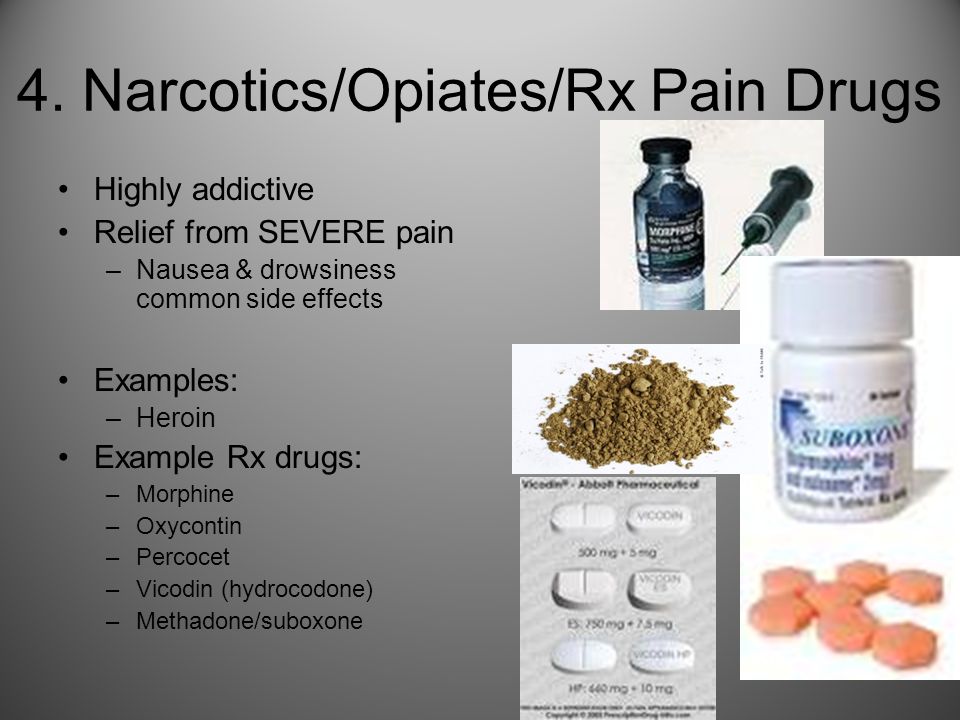 [26]
[26]
Enhancing Healthcare Team Outcomes
NSAIDs like sulindac are a common therapy for patients with arthritis, spondylitis, and tendinitis. Clinicians should be vigilant while prescribing sulindac, as it has few long-term and toxic adverse effects. Nurses should understand the signs and symptoms of toxicities thoroughly and counsel the patients on the importance of adhering to scheduled dosing regimens. Pharmacists should check the dose, verify the appropriateness of the treatment with sulindac, and report to the clinicians any concerns. Nurses can counsel the patient and monitor for these adverse events, reporting to the prescriber if they note any concerns. All healthcare team members should be able to implement treatment protocols rapidly in the case of emergencies to improve patient care. Sulindac therapy needs an interprofessional healthcare team, including clinicians, specialists, specialty-trained nurses, and pharmacists, collaborating across disciplines to achieve optimal patient outcomes.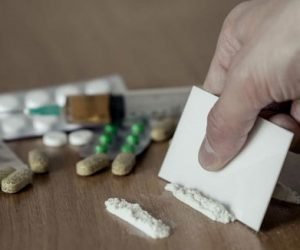 [Level 5]
[Level 5]
Review Questions
Access free multiple choice questions on this topic.
Comment on this article.
References
- 1.
Karachalios GN, Donas G. Sulindac in the treatment of acute gout arthritis. Int J Tissue React. 1982;4(4):297-9. [PubMed: 7169301]
- 2.
Gurpinar E, Grizzle WE, Piazza GA. COX-Independent Mechanisms of Cancer Chemoprevention by Anti-Inflammatory Drugs. Front Oncol. 2013;3:181. [PMC free article: PMC3708159] [PubMed: 23875171]
- 3.
Saad J, Mathew D. StatPearls [Internet]. StatPearls Publishing; Treasure Island (FL): Jul 18, 2022. Nonsteroidal Anti-Inflammatory Drugs Toxicity. [PubMed: 30252262]
- 4.
Yin T, Wang G, Ye T, Wang Y. Sulindac, a non-steroidal anti-inflammatory drug, mediates breast cancer inhibition as an immune modulator. Sci Rep. 2016 Jan 18;6:19534. [PMC free article: PMC4725989] [PubMed: 26777116]
- 5.
Strong HA, Warner NJ, Renwick AG, George CF.
 Sulindac metabolism: the importance of an intact colon. Clin Pharmacol Ther. 1985 Oct;38(4):387-93. [PubMed: 4042521]
Sulindac metabolism: the importance of an intact colon. Clin Pharmacol Ther. 1985 Oct;38(4):387-93. [PubMed: 4042521]- 6.
Brown BL, Johnson JH, Hearron MS. Double-blind comparison of flurbiprofen and sulindac for the treatment of osteoarthritis. Am J Med. 1986 Mar 24;80(3A):112-7. [PubMed: 3515919]
- 7.
Sitar DS, Owen JA, MacDougall B, Hunter T, Mitenko PA. Effects of age and disease on the pharmacokinetics and pharmacodynamics of sulindac. Clin Pharmacol Ther. 1985 Aug;38(2):228-34. [PubMed: 4017423]
- 8.
Siegmeth W, Hartmann G, Sieberer W. [Sulindac in the treatment of soft tissue rheumatism (periarthropathy of the hip and shoulder (author’s transl)]. Wien Med Wochenschr. 1980 Jul 31;130(13-14):492-5. [PubMed: 7424040]
- 9.
LiverTox: Clinical and Research Information on Drug-Induced Liver Injury [Internet]. National Institute of Diabetes and Digestive and Kidney Diseases; Bethesda (MD): Jul 19, 2017.
 Gout Medications. [PubMed: 31643551]
Gout Medications. [PubMed: 31643551]- 10.
Sammaritano LR, Bermas BL, Chakravarty EE, Chambers C, Clowse MEB, Lockshin MD, Marder W, Guyatt G, Branch DW, Buyon J, Christopher-Stine L, Crow-Hercher R, Cush J, Druzin M, Kavanaugh A, Laskin CA, Plante L, Salmon J, Simard J, Somers EC, Steen V, Tedeschi SK, Vinet E, White CW, Yazdany J, Barbhaiya M, Bettendorf B, Eudy A, Jayatilleke A, Shah AA, Sullivan N, Tarter LL, Birru Talabi M, Turgunbaev M, Turner A, D’Anci KE. 2020 American College of Rheumatology Guideline for the Management of Reproductive Health in Rheumatic and Musculoskeletal Diseases. Arthritis Rheumatol. 2020 Apr;72(4):529-556. [PubMed: 32090480]
- 11.
Martin E, Vickers B, Landau R, Reece-Stremtan S. ABM Clinical Protocol #28, Peripartum Analgesia and Anesthesia for the Breastfeeding Mother. Breastfeed Med. 2018 Apr;13(3):164-171. [PubMed: 29595994]
- 12.
LiverTox: Clinical and Research Information on Drug-Induced Liver Injury [Internet].
 National Institute of Diabetes and Digestive and Kidney Diseases; Bethesda (MD): Mar 20, 2020. Sulindac. [PubMed: 31643638]
National Institute of Diabetes and Digestive and Kidney Diseases; Bethesda (MD): Mar 20, 2020. Sulindac. [PubMed: 31643638]- 13.
Bjorkman D. Nonsteroidal anti-inflammatory drug-associated toxicity of the liver, lower gastrointestinal tract, and esophagus. Am J Med. 1998 Nov 02;105(5A):17S-21S. [PubMed: 9855171]
- 14.
Wongrakpanich S, Wongrakpanich A, Melhado K, Rangaswami J. A Comprehensive Review of Non-Steroidal Anti-Inflammatory Drug Use in The Elderly. Aging Dis. 2018 Feb;9(1):143-150. [PMC free article: PMC5772852] [PubMed: 29392089]
- 15.
Sánchez-Borges M, Caballero-Fonseca F, Capriles-Hulett A, González-Aveledo L. Hypersensitivity Reactions to Nonsteroidal Anti-Inflammatory Drugs: An Update. Pharmaceuticals (Basel). 2010 Jan 05;3(1):10-18. [PMC free article: PMC3991018] [PubMed: 27713240]
- 16.
Mockenhaupt M, Kelly JP, Kaufman D, Stern RS., SCAR Study Group. The risk of Stevens-Johnson syndrome and toxic epidermal necrolysis associated with nonsteroidal antiinflammatory drugs: a multinational perspective.
 J Rheumatol. 2003 Oct;30(10):2234-40. [PubMed: 14528522]
J Rheumatol. 2003 Oct;30(10):2234-40. [PubMed: 14528522]- 17.
Ungprasert P, Cheungpasitporn W, Crowson CS, Matteson EL. Individual non-steroidal anti-inflammatory drugs and risk of acute kidney injury: A systematic review and meta-analysis of observational studies. Eur J Intern Med. 2015 May;26(4):285-91. [PubMed: 25862494]
- 18.
Eriksson LO, Beermann B, Kallner M. Renal function and tubular transport effects of sulindac and naproxen in chronic heart failure. Clin Pharmacol Ther. 1987 Dec;42(6):646-54. [PubMed: 3319349]
- 19.
Wood LJ, Mundo F, Searle J, Powell LW. Sulindac hepatotoxicity: effects of acute and chronic exposure. Aust N Z J Med. 1985 Aug;15(4):397-401. [PubMed: 3866535]
- 20.
Murray MD, Brater DC. Renal toxicity of the nonsteroidal anti-inflammatory drugs. Annu Rev Pharmacol Toxicol. 1993;33:435-65. [PubMed: 8494347]
- 21.
Goodwin SD, Glenny RW. Nonsteroidal anti-inflammatory drug-associated pulmonary infiltrates with eosinophilia.
 Review of the literature and Food and Drug Administration Adverse Drug Reaction reports. Arch Intern Med. 1992 Jul;152(7):1521-4. [PubMed: 1627033]
Review of the literature and Food and Drug Administration Adverse Drug Reaction reports. Arch Intern Med. 1992 Jul;152(7):1521-4. [PubMed: 1627033]- 22.
Lione A, Scialli AR. The developmental toxicity of indomethacin and sulindac. Reprod Toxicol. 1995 Jan-Feb;9(1):7-20. [PubMed: 8520134]
- 23.
Angeles ML, Reid ME, Yacob UA, Cash KL, Fetten JV. Sulindac-induced immune hemolytic anemia. Transfusion. 1994 Mar;34(3):255-8. [PubMed: 8146901]
- 24.
Memon AN. Pancreatitis and sulindac. Ann Intern Med. 1982 Jul;97(1):139. [PubMed: 7091990]
- 25.
Schoenfeld A, Bar Y, Merlob P, Ovadia Y. NSAIDs: maternal and fetal considerations. Am J Reprod Immunol. 1992 Oct-Dec;28(3-4):141-7. [PubMed: 1285865]
- 26.
Vaughn JL, Shah KV, Ghossein MM, Meyer WL, Kirkpatrick RB. Acute kidney injury, hyperbilirubinemia, and ischemic skin necrosis due to massive sulindac overdose. Curr Drug Saf. 2015;10(2):190-2.
 [PubMed: 25986039]
[PubMed: 25986039]- 27.
Gross GE. Granulocytosis and a sulindac overdose. Ann Intern Med. 1982 Jun;96(6 Pt 1):793-4. [PubMed: 7091952]
Disclosure: Akul Munjal declares no relevant financial relationships with ineligible companies.
Disclosure: Roopma Wadhwa declares no relevant financial relationships with ineligible companies.
Drug Detectors | ||||||||||||||||||||||||||||||||||||||||||||
Cannabinoid Diagnostic Test (TCT) SERATEC (Germany) Demonstrative step-by-step analysis for the qualitative detection of the cannabinoid metabolite 11-nor-*9-tetrahydrocannabinol-carboxylic acid in human urine. Designed for professional In Vitro Diagnostic use only. APPLICATION The SERATEC Cannabinol Diagnostic Test (TCT) is a secondary in nature, incremental test for the chemical detection of cannabinol in human urine at a cutoff of 50ng/mL. This preparation is used to obtain a visual, high-quality result and is intended for professional use. This test should not be used without proper supervision and is not intended for mass sale into untrustworthy hands. This preparation provides only preliminary analysis results. A more specific alternative chemical method should be used to obtain the final results of the analysis. Gas chromatography/mass spectrometry (GC/MS) has been recognized as an accepted method by the National Institute of Drug Prevention. Clinical judgments and physician judgments should be used in connection with any drug detection tests, especially if preliminary analysis is confirmed. SCIENTIFIC BACKGROUND Cannabinoids are hallucinogenic reagents derived from the flowering part of the marijuana plant. The active element of the cannabinoid is tetrahydrocannabinol (THC). Cannabis can be consumed through smoking (marijuana) or the digestive tract. Abuse of the drug can lead to hallucinations and an elevation of euphoric mood, which is often accompanied by dullness, spontaneous laughter, and increased reaction time. Screening urine-based drug (life-threatening) tests range from simple immunoassays to complex laboratory tests. The speed and reliability of immunoassays have made them the most common method of screening urine for addictive drugs. The SERATEC Cannabinol (TC) test is based on specific immunochemical reactions of antigens and antibodies that are used in the analysis of specific compounds in biological media. FUNCTION The SERATEC Cannabinol Drug Detection Test (CTC) is a sequential immunoassay that pits one chemically labeled drug (pair drug) against a drug that may be present in the urine due to the reduced presence of binding antibodies. The test device comprises a strip of membrane specially coated with an adjacent drug on the shaft of the test device. Stained (golden) anti-cannabinol pad of paired single-clonal colloidal antibody is on the right edge of the membrane. In the absence of the drug in the urine, the gold-coloured colloidal antibody solution and urine move upward, chromatographically under the action of vessels, through the membrane. This solution is moved to the immobile zone of the paired drug in the region of the testing device rod. The colored (golden) paired colloidal antibody attaches to the paired drug, forming a prominent antibody-paired drug coupling reaction band. STORAGE AND SAFETY The test kit should be stored refrigerated or at room temperature +4 – +30C (38-86 F) in a special closed bag during the entire expiration date. WARNINGS
MATERIALS INCLUDED
MATERIALS REQUIRED
SPECIMEN COLLECTION AND HANDLING The SERATEC THC (Cannabinol) detection test is manufactured for use with urine samples. Fresh urine does not require special handling or pretreatment. Urine samples should be collected in such a way that they can be tested on the same day, as soon as possible. Samples can be kept refrigerated at +2-8°C for 2 days and frozen at -20°C for longer periods. Samples that have been frozen must be brought to room temperature before sampling. Pre-frozen assays must be thawed to room temperature and thoroughly mixed before testing. Warning: All specimens and substances that come into contact with them must be treated as potential and probable carriers of infection. TEST PROCESS Read the instruction “Collection of Samples”. The test fixture, patient assays, and control device should be brought to room temperature (20-30°C) prior to testing. Do not open the sample bag until all preparations for the start of analysis have been completed. 1. Remove the test fixture from the protective bag (before doing this, bring the fixture into the room and allow it to reach the temperature of the environment in which it is located in order to avoid condensation and fogging of the membrane). Label each sample with the patient’s first and last name or control data according to the test. 2. Pipette the assay up to the indicated mark (approximately 0.2 ml). Then shake the contents of the pipette well. Use a separate pipette for each assay. 3. Read the result 3-8 minutes after submitting the tests. Do not read it after 8 minutes. DETERMINATION OF RESULTS Negative result: Two colored lines appear in the viewing window. The area in the test zone (T) is the drug analysis field; the field in the control zone (C) is the control field, which indicates the correct operation of the device. The color intensity of the test field (T) can be either less or more, in contrast to the control field (C). Attention: A weakly colored field of the tester indicates that the concentration of cannabinol is close to zero. In this case, the test should be repeated or carried out using a more specific method. Positive result Only one colored band appears in the control field (C). The absence of color in the test line (T) indicates a positive result. Error: If no lines appear in the test area, the test was performed incorrectly and should be repeated TEST LIMITATIONS
QUALITY CONTROL Long-standing laboratory practice shows the need for the use of control substances to ensure the stability of reliable test results. High quality controls are widely available commercially. When testing control samples for positive or negative results, use the same algorithm used in tests with human urine. TEST CHARACTERISTICS * To clarify the concentration of cannabinol THC in non-clinical samples, drug-free human urine was diluted with a substance according to Pharmaceutical Standard N6893 Sigma. A. Sensitivity The accuracy of the SERATEC THC (Cannabinol) test has been evaluated against commercially available analogues to within 50 ng/mL. 120 urine samples taken from presumably drug-free volunteers, as a result, passed both laboratory tests with 100% certainty and showed negative results. In a separate analysis, 72 urinalysis samples obtained from a clinical laboratory where they were tested and found positive according to widely available GC/MC laboratory tests were tested for THC by SERATEC. The concentration of cannabinol in the samples varied from 34.7 to 298 ng/ml. 15 samples with cannabinol concentrations ranging from 61.2 to 74.8 ng/ml showed positive results in the SERATEC test. 49 samples with cannabinol THC levels greater than 75 ng/ml showed consistently positive results. Between 34.7-44.6 ng/mL, 8 SERATEC tests showed negative results. Based on clinical sample data, the main characteristics of the SERATEC test were calculated:
B. The reproducibility of the SERATEC test for the detection of Cannabinol (TC) was established at four different sites using covert tests. 60 samples containing 25 ng/ml THC showed negative results. 60 tests with a concentration of 100 ng / ml showed a positive result. Of the 60 samples containing cannabinol at the cutoff level of 50ng/ml, 20% were positive and 10% were negative, and 70% showed an ambiguous result (+/-), thus showing significant test instability. B. Precision The accuracy of the test was determined by blind assays with the following cannabinol content in the samples: 25, 37.5, 62.5, 75 ng/ml, respectively.
1* : including 13 (+/-) results . D. Specificity The specificity of the SERATEC THC cannabinol test was tested by adding various drugs, drug metabolites and other compounds that may be found in human urine. All components were prepared in drug-free human urine. The following structurally related components have shown positive results when tested at levels equal to or greater than the concentration values given below.
* – maximum content limit The following components did not cross-react when tested at concentrations up to the 100 ng/mL mark. Acetaminophen, Acetone, Albumin, Amitripcilin, Ampicillin, Aspartame, Aspirin, Atropine, Benzocaine, Bilirubin, BenzeneEgonine, Caffeine, Chlorokine, (+)-Chlorpheniramine, (+/-)-Chlorpheniramine, Creatine, Dexbrompheniramine, Dextromethorphan, 4-Dimethylaminoant ipurine , Dopamine, Diazepam, Doxidamine, (+/-) – Ephedrine, (-) – Ephedrine, (+) – Epinephrine, Erythromycin, Ethanol, Egonine, Egonine-Methylester, Furosemide, Glucose, Guayacol-Glycerin-Ether, Hemoglobin, Imipramine , (+/-) – Isoproterenol, Lidocaine, Meperidine, Methadone, Metakualon, (1R,2S) – (-) N-Methyl-Ephedrine, (+/-) 3.4-Methylenedioxymethamphetamine, Morphine, Methylphenidate, (+) – Naproxen , (+/-) – Norephedrine, Naltrexone, Nortripteline, Oxycodone, Penicillin G, Promethacin, Procaine, Pentermine, Propoxyphene-D, Pheniramine, Phenocyacin, Phenylephrine-L, Oxalic Acid, Phenylethylamine-B, Kinidin, Riboflavin, Soda Chloride, Sulindac, Thioridazine, Trifluoroperazine, Trimethobenzamide, Tyramine, Vitamin C. |
Call for a complete ban on diclofenac
Two clinical pharmacologists from the UK and Canada have called for the worldwide removal of the common pain reliever diclofenac from national lists of essential drugs. The analysis showed that, despite the dangerous side effects, the drug remains popular in most countries of the world.
1
minute
Two clinical pharmacologists from the UK and Canada have called for the widespread removal from sale and removal from national lists of essential drugs of the common pain reliever diclofenac, an analgesic from the group of non-steroidal anti-inflammatory drugs.
As pointed out in their work published in the journal PLOS Medicine , Patricia McGettigen (Patricia McGettigan) from the British School of Medicine and Dentistry Barts and The London and David Henry (David Henry) from the University of Toronto, back in 2006 it was proved that diclofenac , as well as the drug Vioxx, which was banned in 2004, increases the risk of heart attacks and other cardiovascular diseases by about 40 percent with long-term use.
However, the analysis carried out by the authors showed that diclofenac, despite the presence of a less dangerous analogue, naproxen, continues to be the most commonly prescribed non-steroidal anti-inflammatory drug in 15 countries of the world, and also remains included in the national lists of essential medicines in another 74 countries. . Moreover, diclofenac is used with the same frequency both in the most developed and in the poorest countries of the planet.
At the same time, naproxen is included in the national lists of vital drugs only in 27 countries, and, unlike diclofenac, which is in the top three most popular drugs, occupies only 10 percent of the market. The analysis showed that the level of sales and frequency of prescriptions of diclofenac (at least in the UK and Canada) is on average three times higher than that of naproxen.
The results of the study prove that information about the risks associated with diclofenac has not reached practicing clinicians, McGettigen and Henry conclude.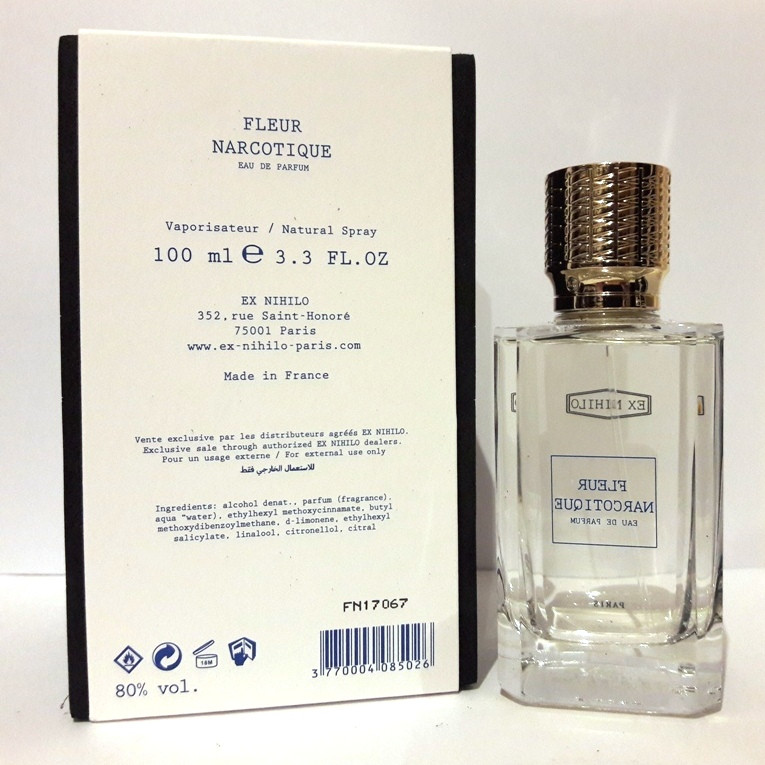

 You shouldn’t take sulindac if you’ll be having coronary artery bypass graft surgery. Your risk of heart attack or stroke may increase if you take sulindac to treat pain before or after your surgery. Also, avoid taking sulindac after a recent heart attack unless your healthcare provider tells you to.
You shouldn’t take sulindac if you’ll be having coronary artery bypass graft surgery. Your risk of heart attack or stroke may increase if you take sulindac to treat pain before or after your surgery. Also, avoid taking sulindac after a recent heart attack unless your healthcare provider tells you to. Symptoms can include:
Symptoms can include:
 Sulindac has been one of the most extensively studied drugs used in this chemopreventative strategy.[2]
Sulindac has been one of the most extensively studied drugs used in this chemopreventative strategy.[2] These side effects become exacerbated by the simultaneous use of alcohol and or steroids.[13]
These side effects become exacerbated by the simultaneous use of alcohol and or steroids.[13] [15]
[15] [17]
[17]
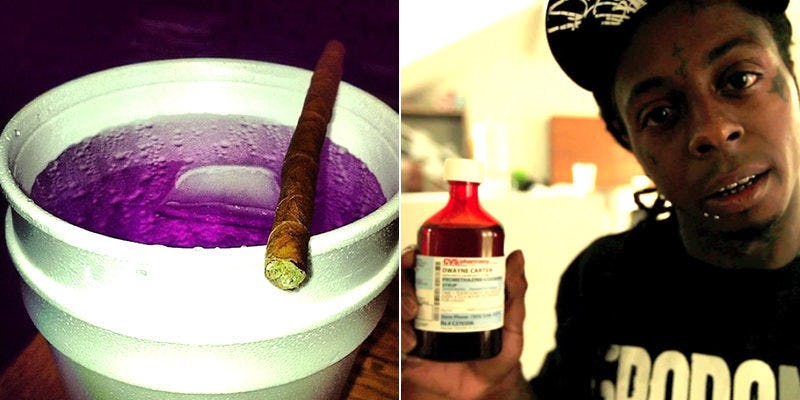 Sulindac metabolism: the importance of an intact colon. Clin Pharmacol Ther. 1985 Oct;38(4):387-93. [PubMed: 4042521]
Sulindac metabolism: the importance of an intact colon. Clin Pharmacol Ther. 1985 Oct;38(4):387-93. [PubMed: 4042521] Gout Medications. [PubMed: 31643551]
Gout Medications. [PubMed: 31643551] National Institute of Diabetes and Digestive and Kidney Diseases; Bethesda (MD): Mar 20, 2020. Sulindac. [PubMed: 31643638]
National Institute of Diabetes and Digestive and Kidney Diseases; Bethesda (MD): Mar 20, 2020. Sulindac. [PubMed: 31643638] J Rheumatol. 2003 Oct;30(10):2234-40. [PubMed: 14528522]
J Rheumatol. 2003 Oct;30(10):2234-40. [PubMed: 14528522]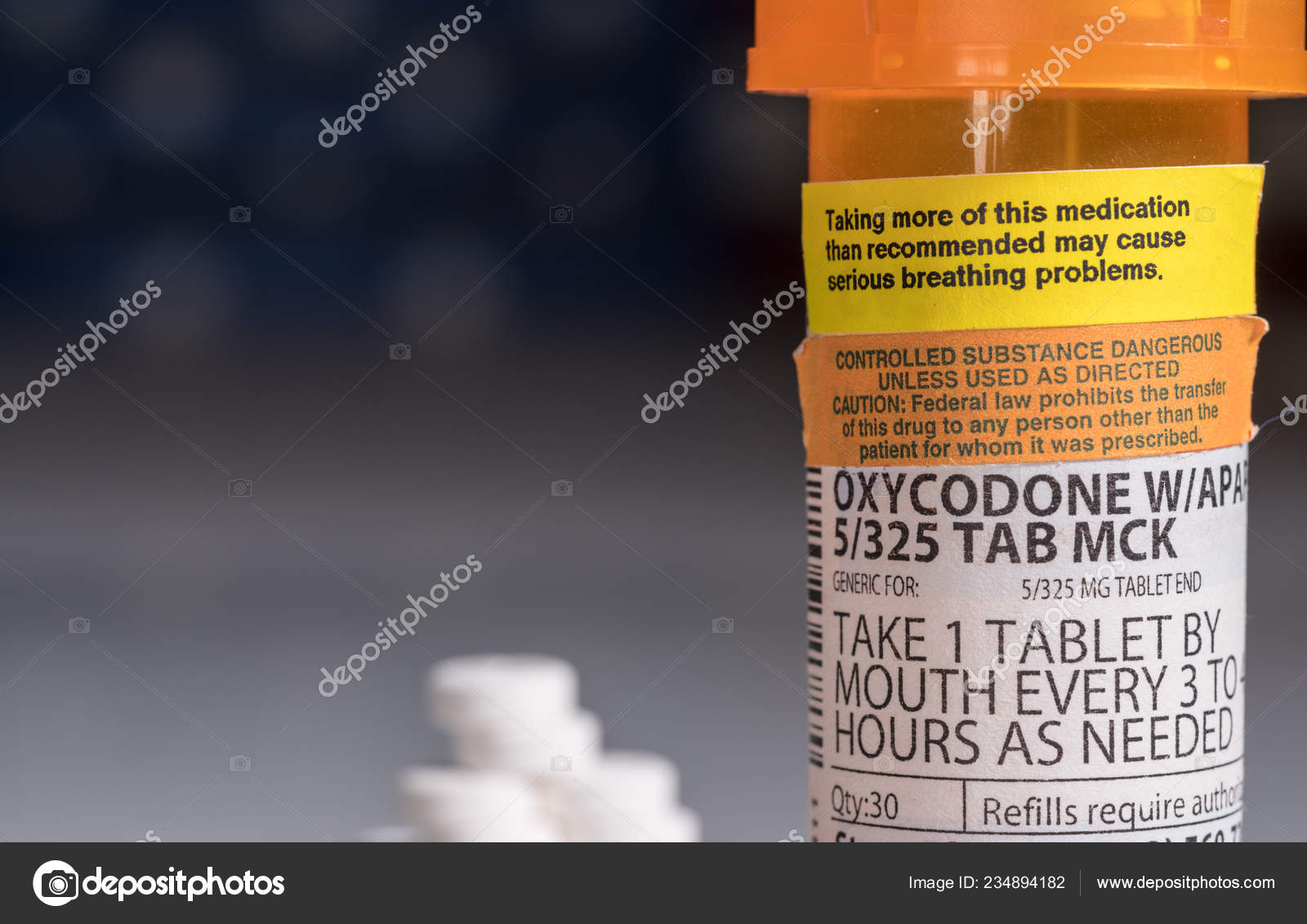 Review of the literature and Food and Drug Administration Adverse Drug Reaction reports. Arch Intern Med. 1992 Jul;152(7):1521-4. [PubMed: 1627033]
Review of the literature and Food and Drug Administration Adverse Drug Reaction reports. Arch Intern Med. 1992 Jul;152(7):1521-4. [PubMed: 1627033] [PubMed: 25986039]
[PubMed: 25986039]
 In addition, the cannabis user may experience loss of coordination, short-term memory impairment, anxiety, paranoia, depression, confusion, and increased heart rate. Frequent use, as a rule, leads to a dulling of psychotropic and somatic sensations. Abrupt cessation of drug use can lead to withdrawal symptoms such as restlessness, insomnia, anorexia, and motion sickness. THC is digested in the liver and excreted in the urine primarily as 11-nor-*9-THC-carboxylic acid or as a glucuronide not long after its ingestion. 11-nor-*9-THC-carboxylic acid has a half-life of 24 hours and can be detected 1-5 days later.
In addition, the cannabis user may experience loss of coordination, short-term memory impairment, anxiety, paranoia, depression, confusion, and increased heart rate. Frequent use, as a rule, leads to a dulling of psychotropic and somatic sensations. Abrupt cessation of drug use can lead to withdrawal symptoms such as restlessness, insomnia, anorexia, and motion sickness. THC is digested in the liver and excreted in the urine primarily as 11-nor-*9-THC-carboxylic acid or as a glucuronide not long after its ingestion. 11-nor-*9-THC-carboxylic acid has a half-life of 24 hours and can be detected 1-5 days later. This test is a rapid, visual, competitive assay that can be used to detect cannabinol in human urine at a cutoff of 50 ng/mL.
This test is a rapid, visual, competitive assay that can be used to detect cannabinol in human urine at a cutoff of 50 ng/mL. This explains the formation of visible sediment in the test area when the test urine shows no drug content. If the drug is present in the urine, it/antigen metabolite fights with the adjunct (pair element) of the drug in the region of the tester rod (“testing device”) to occupy the cell of the dropped antibody on the anti-cannabinol monoclonal antibody-golden colloidal conjugate (pair element). In the case of a sufficient amount of the drug, it will occupy the dropped structural cells of the antibody. This will by itself prevent the stained antibody-colloidal gold conjugate from attaching to the coupled drug zone on the tester shaft. Therefore, the absence of a colored rod in the test area indicates a positive result. In addition, a control strip with a differential antigen/antibody reaction is added to the immunochromatographic membrane tape in the control zone (C) to establish the correct completion of the test. Such a control strip should always be present, regardless of whether the drug or metabolite is there.
This explains the formation of visible sediment in the test area when the test urine shows no drug content. If the drug is present in the urine, it/antigen metabolite fights with the adjunct (pair element) of the drug in the region of the tester rod (“testing device”) to occupy the cell of the dropped antibody on the anti-cannabinol monoclonal antibody-golden colloidal conjugate (pair element). In the case of a sufficient amount of the drug, it will occupy the dropped structural cells of the antibody. This will by itself prevent the stained antibody-colloidal gold conjugate from attaching to the coupled drug zone on the tester shaft. Therefore, the absence of a colored rod in the test area indicates a positive result. In addition, a control strip with a differential antigen/antibody reaction is added to the immunochromatographic membrane tape in the control zone (C) to establish the correct completion of the test. Such a control strip should always be present, regardless of whether the drug or metabolite is there. This means that urine that is negative will leave two colored streaks, while urine that is positive will only leave one streak. The presence of this indicator strip in the control zone also serves as 1) evidence that sufficient volume has been provided and 2) the required influx of the test composition has been achieved.
This means that urine that is negative will leave two colored streaks, while urine that is positive will only leave one streak. The presence of this indicator strip in the control zone also serves as 1) evidence that sufficient volume has been provided and 2) the required influx of the test composition has been achieved.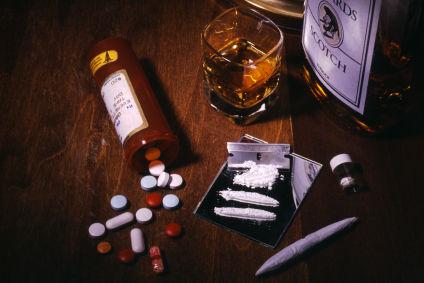
 Avoid skin contact by protecting hands with gloves and appropriate laboratory workwear.
Avoid skin contact by protecting hands with gloves and appropriate laboratory workwear.
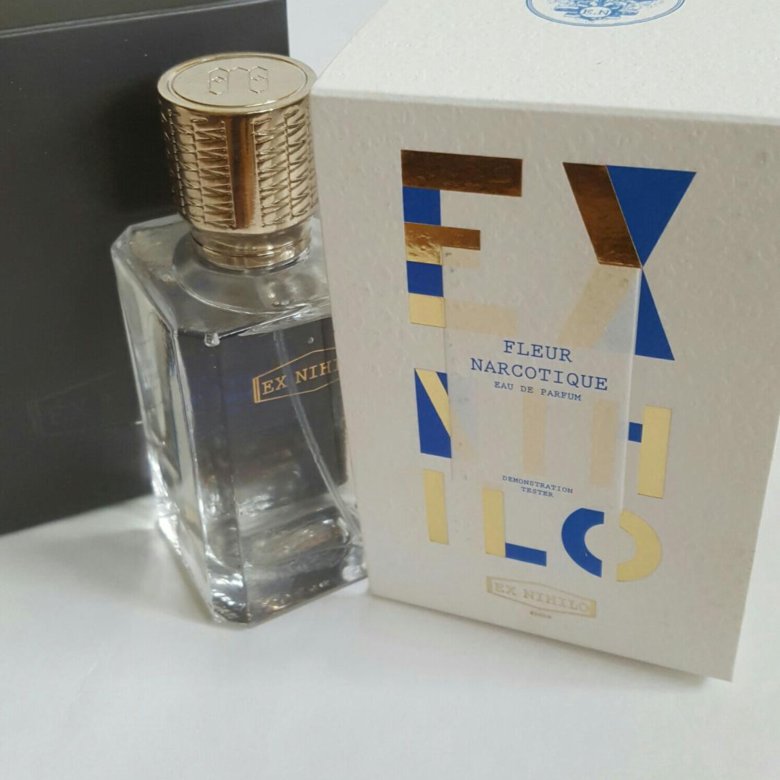

 Reproducibility
Reproducibility  0
0

